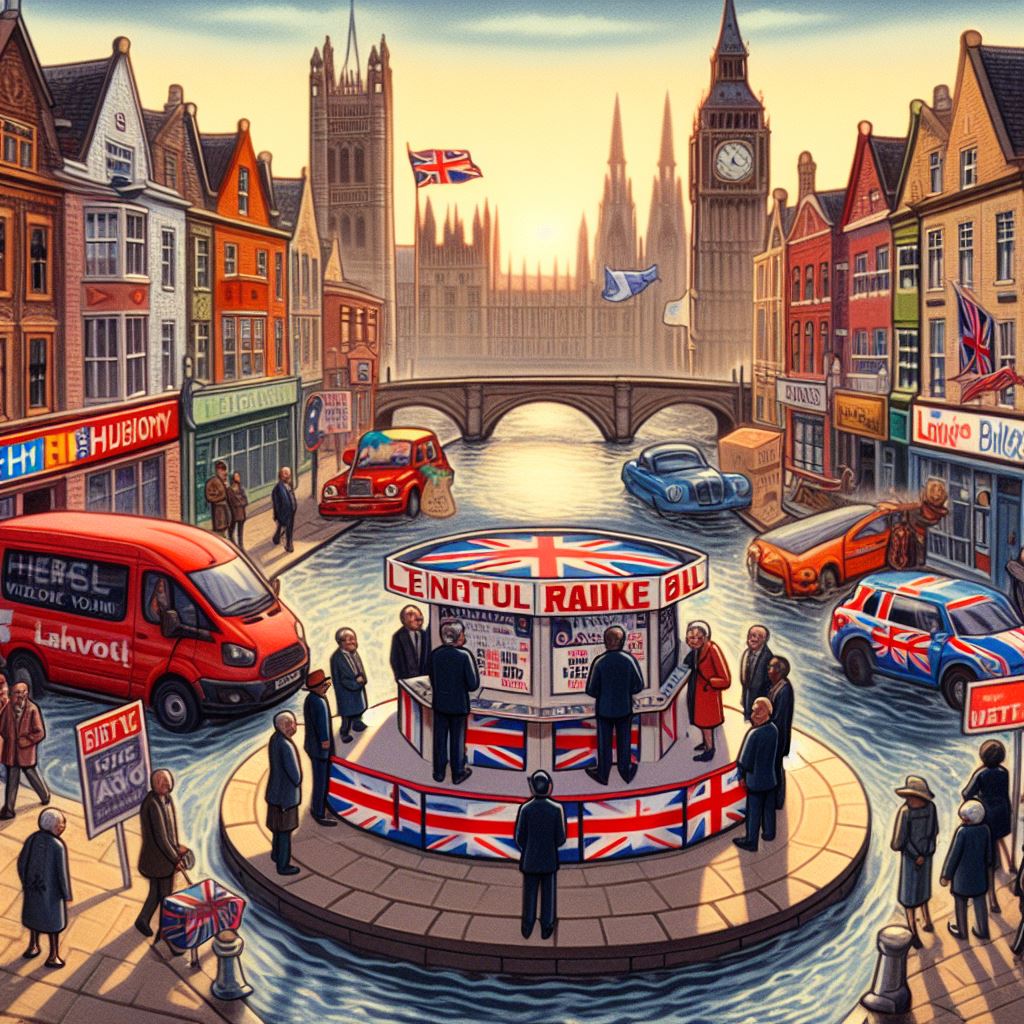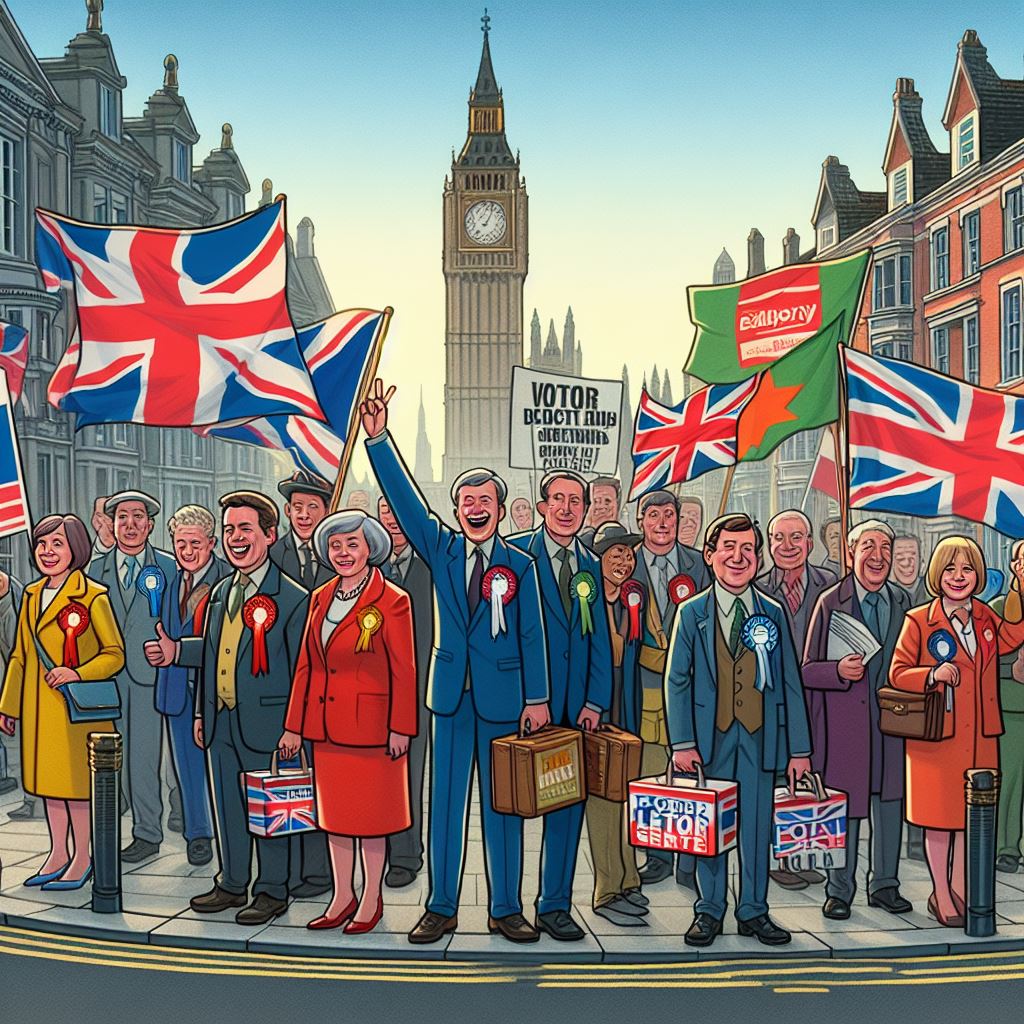
The kaleidoscope is an old-fashioned toy that I remember from my youth, which has long since been superseded by digital effects that don’t reproduce its magic. It was a cardboard tube that you looked down, with mirrors inside creating a symmetrical pattern. The magic came from small bits of coloured glass; as you twisted the end of the tube, gravity would force a realignment of these into an ever-changing series of patterns. I could not find an animation of this that did not involve an expensive subscription. You might be able to see this video (which is the real thing, not an animation) by Yuri Pomonev published by Adobe from this link. Digital kaleidoscope animations are plentiful, and they reproduce the mirror effect well enough, but they don’t attempt to replicate the effect of bits of coloured glass and gravity. And that is what my metaphor draws on.
Society is made up of a collection of individuals. We each have a point of view that is unique, shaped by our experiences and our own inner make-up. That applies to our politics, as it does to everything else. But we are social animals, and we like to line up with our fellow humans to feel a sense of togetherness and belonging. This creates political movements and collective alignments. But they are much more fragile than people suppose. As circumstances change, alignments break up and new ones are formed. Like the glass bits in a kaleidoscope.
Politicians often struggle with this. They try to simplify the complex world around them by investing in these temporary alignments, with themselves to at the centre, and imagining that they homogenous blocks that will endure. History is littered with examples. The British left thought this was happening in 2017, when Labour under Jeremy Corbyn did unexpectedly well in the general election, after tacking to the left, and raising turnout among younger voters, among others. They imagined themselves to be one step short winning outright – and many on the left retain this illusion. But instead there was a devastating realignment and in 2019 many of their former voters stayed at home, or voted for other parties, while other voters who had stayed at home in 2017 turned out in droves to vote Conservative. Labour crashed to a huge defeat. The kaleidoscope had turned.
We are now witnessing a similar delusion on the political right. The Conservative landslide in 2019 was interpreted as a popular, majority movement in favour of a suite of far-right policies, often referred to by people like me as “populism”. This was evidenced recently by the extraordinary launch of a new political faction called “Popular Conservativism”, who also want to be known “PopCons”. That this movement was led by Britain’s most unpopular leader of a major political party ever, Liz Truss, just goes to show that Ms Truss is a gift to political satire that just keeps on giving. The remarkable thing about this event was the attention it drew; the launch venue was packed, with many disappointed that there was no room for them. These Tory politicians feel that they are with touching distance of rebuilding a political movement which can give them a strong parliamentary majority.
What drives this view? The answer can be seen from the writings of Matt Godwin, the populist commentator who seems to provide the intellectual fuel for the modern political right. He produces plentiful polling evidence that disillusionment with politics is widespread, and especially evidenced by anger at high levels of immigration. His narrative is that these people are angry at a liberal minority that effectively controls state institutions, and is imposing its often delusional “luxury beliefs” on the rest of the nation. He suggests that support for anti-liberal policies is not just in the majority, but efficiently distributed in Britain’s electoral system, with liberal voters concentrated in a relatively small number of seats.
This narrative has weaknesses, but it is far from nonsense. Mr Goodwin is an academic and knows how to talk about evidence. That is one reason that he is required reading for the whole political spectrum. I have not yet mustered the courage to move beyond my free subscription to his Substack, he tends to talk of his paying subscribers as “supporters” of a political movement, and I think that, for all his useful insights, he is a malign force, acting to make the country’s difficult problems even harder to solve. His demonisation of the liberal elite is especially egregious, and is, in fact, another example of the kaleidoscope delusion. But my views count for little. The more important thing is that he has created a trap that Conservative politicians like Ms Truss have fallen into.
The trap is to think that the popular majority that Mr Goodwin identifies supports the full suite of nationalist-libertarian beliefs that these Tories espouse. These include not just lower migration and a rejection of multiculturalism, but the need for a low-tax, low-spending state, and a minimum of laws to restrain personal freedom. They were outraged by the application of a strict lockdown to combat the Covid-19 pandemic. They also espouse a powerful commercial sector, driving high levels of economic growth and the accumulation of wealth by a lucky minority. In fact the polling evidence points to strong support for regulation of behaviour deemed as antisocial (including the spreading of the covid virus); for strong state services, especially health and a relatively intrusive police force; and for welfare spending, as long as it for universal state pensions to people that have lived in the country most of their lives. Lower taxes are popular, but to the extent that there are trade-offs between taxes and critical public services, or inflation, this cannot be taken for granted. The majority are decidedly indifferent to such abstract ideas as economic growth, and have reservations about rampant commercialism, and the already wealthy getting wealthier still, especially if they are paying less taxes than poorer people. Green policies are ambiguous; Tory populist politicians tend to think that anti-carbon policies are the result of an alarmist conspiracy. A significant proportion of the public probably believe this too – but many more are worried about global warming; David Attenborough’s popularity goes well beyond the liberal 30% that Mr Goodwin demonises. But well-meaning regulations that impinge on people’s daily lives are a tough sell, and the populists may be onto something there.
The PopCons show little sign that they are really in touch with people at large, or that they are able to craft a programme that will allow them to recover their support anything like enough. Their competitors on the right, Reform UK, show even less sign they understand this, though that could change if their President, Nigel Farage, steps back into day-to-day control. But once the current government is consigned to history, there is certainly a chance that a populist coalition is reformed as the kaleidoscope turns again. Out of power, they will not be under such pressure to develop coherent policies, and in particular they will not need to choose between the holy trinity of low immigration, low taxes and low inflation – unless the public twigs that having all three is impossible. But they should give thought to how to appeal to younger voters without overly alienating older ones, as right-wing populists have managed to do in other countries. They might emphasise how high immigration is screwing up the housing market. They should probably talk less about Brexit. It might also help if they downplayed their nativism and criticism of multiculturalism – although these are themes that play well to younger voters in other countries.
But it is not just the political right that needs to worry about the kaleidoscope. Sir Keir Starmer’s Labour Party is polling very well but support is unenthusiastic. Once in power another twist could see its support collapse. If the political right fluff their opportunity, could a challenge emerge from the left? Mr Corbyn’s success in 2017 is perhaps a precedent – but his coalition included mainstream Labour, a lot of whom would stay loyal to a Labour government. Perhaps the rise of Syriza in Greece offers a better example; another case is Jean-Luc Mélenchon’s La France Insoumise movement, although this has failed to win power. Both left-wing movements were alliances of socialist and green parties, co-existing with significance far right populist movements. Both effectively destroyed the historical and centrist socialist parties.
This possibility should not be ruled out, led by a breakaway from Labour, if an appropriate and charismatic leader can be found. It faces two difficulties, however. One is that it probably needs to link up with the Green and perhaps even the Liberal Democratic parties – and these parties have recently being doing well by scooping up liberal-minded voters in the rural areas – to whom a far-left movement is anathema. However, both parties may sense an opportunity if Labour weakens once in power – as they did during the last Labour government. The second problem is that the core of such an electoral coalition is metropolitan voters, typically graduates and working in the public or third sectors – these voters are not distributed efficiently geographically, as conservative voters are: they are concentrated in the big cities (hence “metropolitan”), and the country’s electoral system punishes such concentration. The two issues are linked – as those new Green and Lib Dem voters are distributed in a complementary way. So the far left somehow needs to fuse with the liberal middle class. Perhaps that is not so fanciful – if a programme can be agreed with electoral reform at its heart.
A further possibility is for a liberal-led revival – although this is arguably a variation of the left-led one, as the potential electoral coalition has a strong overlap. The model for is Emmanuel Macron’s En Marche in France – a move which also grew out a lacklustre government of the centre-left. That would be one in the eye for Mr Goodwin – but a Labour government would have sink rapidly for that to be a possibility.
The bigger picture, though, is that Britain’s post-election politics is extremely unpredictable. Much will depend on whether and where capable political leaders emerge. They are lurking deep in the undergrowth at the moment. But the opportunities are palpable.


